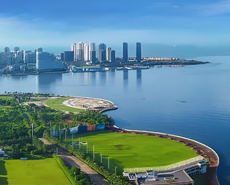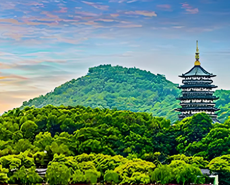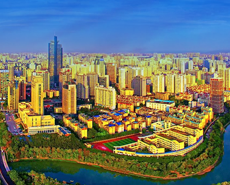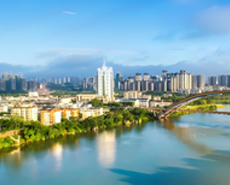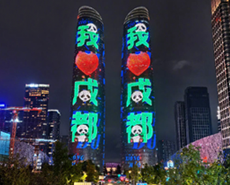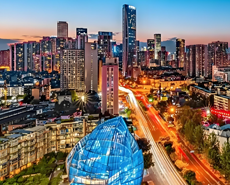Black horse in global tin industry: Grim prospects for Burma tin ore development
----Interview with Bao Yanshang, Chairman of Wa State Yuanmu Mining Co., Ltd.
Located in Wa State, Burma, Wa State Yuanmu Mining Co. Ltd. was founded in 1990s and is one of the first companies which are engaged in the development of tin ore. The company has 30 employees, including 8 senior engineering and technical staff, with fixed assets of 35 million yuan and after-tax annual sales income of 2.6 million yuan.
Asian Metal: Mr. Bao, thank you for accepting this interview. Firstly, could you please give us a brief introduction to your main businesses?
Bao: Our company is mainly engaged in the mining and dressing of tin ore. We have six dressing plants, two of which have gravity-flotation combined flowsheet, and 350 sets of gravity table with a daily processing capacity for 1,200t of raw ore. Our company is actively scaling up production and plans to add new flotation equipment to the remaining three dressing plants before the end of the year. Currently, we hold 200,000t of raw ore in inventory.
Asian Metal: Mr. Bao, could you please introduce the development history of Burmese tin ore briefly?
Bao: The longtan tin mine in Mong Mau, Wa State, was the first mining area with manual mining. It was not until 2005-2007 that new mineral resources were found in Manxiang, Mong Ngen, Wa State, which was officially exploited from late 2009 to early 2010. Wa State Yuanhe Mining Co., Ltd. was the major developer who exploited oxidized ores from landsides and debris flow using open-pit mining method. The tin content of raw ore which was mainly processed during 2010-2011 was above 10-20% and washed ore started to appear in late 2011.
Asian Metal: Burmese tin resources are mainly concentrated in Manxiang, could you please talk about the region briefly?
Bao: There are three known veins within the mining area with extremely regular distribution. The first vein which is 1,300-1,400 meters above the seal level basically consists of oxidized ore that is exploited through open-pit mining method with an output of around 2 million tons. The tin grade is 0.1%-30% with an average grade of 2%-4%. The second vein which is 1,100-1,300 meters above the seal level mainly consists of sulfide ore with regular distribution and dark color. About 3 million tons of tin ore with an average tin grade of 2%-5% are mined from the second vein. The third vein which is basically composed of sulfide ore is 1,000 meters above the sea level. The third vein which was mainly mined in 2015 and is vigorously exploited by Xiaozun company at the moment has a total output of over 1 million tons of raw ore so far with an average grade of 3%-5%.
Asian Metal: Mr. Bao, could you please explain the costs of tin ore mining in Burma?
Bao: The costs of tin ore mining in Burma mainly include three aspects, namely tax, contract fee and royalty. Investors are usually affiliated with local well-established companies. Companies in Wa State contract out their mining rights to investors who have to pay 25% in-kind tax on concentrate (30% cash tax on raw ore) and 10-20% contract fee to those who own the mining rights. Inventors can sell the ore products by themselves after paying all the taxes and fees. The proportion of the output which is eventually obtained by the contractor is around 55% with the highest being 60% and the lowest being 49%. Mining costs include footage fee of RMB300-400/t, mining fee of RMB200-300/t and other expenses of around RMB30/t (management, the cost of capital, etc.).
Asian Metal: The Chinese government has carried out reforms on transportation recently, and I want to know if there are any adjustments to the shipping fees in Burma?
Bao: There are no big changes in polices concerning the transportation fees in Burma, but insiders will raise the fee spontaneously in the rainy season. The transportation fee from Manxiang to Meng’a port is RMB150-180/t, but rises to RMB180-200/t during the rainy season due to the bad traffic and falls back to RMB150-180/t when the rainy season comes to an end in October.
Asian Metal: Has the current mining situation in Burma been adjusted in view of the gradual decline in ore grade?
Bao: Yes, as the raw ore with tin grade of 7-8% has almost been exhausted, exports of high grade raw ore are less than 1,000tpm at the moment. As a result, many plants with gravity-flotation combined flowsheet rebuild in Wa State thanks to the technology R & D carried out by investors from Hunan, Sichuan, Yunnan, etc. The low grade raw ore with 1-3% of tin content can be processed into tin concentrate 30%min with the highest recovery rate reaching 85%. At present, our recovery rate can be as high as 82%. The chemical costs which are estimated to be around RMB50/t in Gejiu are around RMB150/t here.
Asian Metal: According to what you said, the low grade raw ore is directly processed in local plants and the high grade raw ore has run out, so is the future grim for dressing plants in Gejiu?
Bao: Of course, those plants will be affected to some extent. On the one hand, the high grade raw ore is limited; on the other hand, the high grade concentrate we process is supplied directly to smelters. Consequently, dressing plants in Gejiu will be confronted with inadequate supply of raw material.
Asian Metal: According to the current tin market, the tin price has risen to RMB150,000/t since November. What about Burmese tin holders’ attitude towards transactions?
Bao: The price rise is definitely good news for us. According to exports in previous years, tin exports reach the highest level in November as customs will be closed from 20th December when exports will be very limited.
Asian Metal: What do you think about the development prospects for Burmese tin ore?
Bao: At present, we are processing the raw ore exploited earlier and haven’t found new sources. If we fails to find any new resources in future explorations, total tin stocks in Burma which are estimated to be 80,000 metal tons can only last for 2-3 years in terms of exports.
Asian Metal: Thanks again for your time. Wish your company a bright future.
Bao: Thanks. I also hope that Xiaozun, Jinhua, Rongling, Yuanhe and other major companies can work together under the leadership of the Ministry of Finance in Wa State to make contributions to the development of tin mine in the state.




